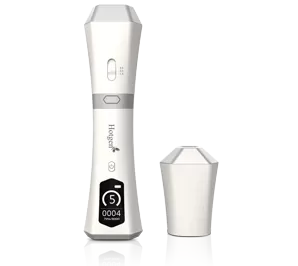Rheumatoid arthritis (RA) is a chronic, systemic autoimmune disease. Epidemiological studies show that the prevalence of RA in mainland China is 0.42%, with over 5 million active cases, making it one of the most common diffuse connective tissue diseases.
Autoantibodies can appear before the clinical manifestation of RA, providing predictive value for early diagnosis, treatment monitoring, and prognosis assessment. Among these, rheumatoid factor (RF) and anti-cyclic citrullinated peptide antibody (Anti-CCP) are included in the classification criteria for RA due to their diagnostic performance. These markers are widely used in clinical practice and have become some of the most commonly tested autoantibodies in clinical laboratories. Below are some rheumatoid factor test kit products from Hotgen:
Hotgen Rheumatoid Diagnosis Products |
Product Name | Methodology | Qualification | Sample Type |
Rheumatoid Factor IgG Detection Kit | Magnetic Particle Chemiluminescence Immunoassay | NMPA | Serum, Plasma |
Rheumatoid Factor IgA Detection Kit | Magnetic Particle Chemiluminescence Immunoassay | NMPA | Serum, Plasma |
Rheumatoid Factor IgM Detection Kit | Magnetic Particle Chemiluminescence Immunoassay | NMPA | Serum, Plasma |
Anti-Cyclic Citrullinated Peptide (CCP) Antibody Detection Kit | Magnetic Particle Chemiluminescence Immunoassay | NMPA | Serum, Plasma |
Rheumatoid Factor (RF) Typing
Rheumatoid factor (RF) is a classic marker for the auxiliary diagnosis of rheumatoid arthritis (RA). It was included as one of the classification criteria for RA by the American College of Rheumatology (ACR) in 1987. However, RF positivity can also occur in other diseases (such as Sjögren's syndrome and hematological disorders), indicating a lack of specificity. A negative RF test does not rule out RA, while a positive RF result must be interpreted in conjunction with clinical symptoms for diagnosis. In diagnosing RA, simultaneous typing of rheumatoid factor (RF)—quantitative detection of RF-IgM, RF-IgG, and RF-IgA—can enhance early diagnostic accuracy and reduce missed diagnoses.
Current RF detection methods are unable to perform typing (only detecting IgM), which can result in false negatives or false positives when RF levels are excessively high or low.
Compared to detecting RF-IgM alone, employing rheumatoid factor (RF) typing reduces false negatives and false positives associated with traditional RF testing, thereby improving the detection rate of RA. Additionally, RF typing aids in evaluating RA severity. RF typing correlates with clinical symptoms and prognosis in RA.
1. High-titer RF-IgM correlates with RA progression and poor prognosis.
2. RF-IgG is associated with synovitis, vasculitis, and joint symptoms in RA patients.
3. RF-IgA relates to the severity of joint inflammation and bone destruction in RA patients.
Anti-CCP Antibody
As a novel biomarker for RA diagnosis, anti-CCP antibodies have been included in authoritative diagnostic criteria both domestically and internationally. In 2010, the American College of Rheumatology (ACR) and the European League Against Rheumatism (EULAR) introduced new RA classification criteria, incorporating anti-CCP as a diagnostic marker. Similarly, China’s 2012 classification criteria for early RA also include anti-CCP testing. A prolonged preclinical phase often precedes RA diagnosis. Anti-CCP antibodies can appear 1–14 years before clinical symptoms, making them particularly suitable for health screenings and early diagnosis in high-risk populations. Anti-CCP antibodies have a specificity exceeding 95% for RA. High-titer anti-CCP positivity significantly increases the likelihood of an RA diagnosis.
Positive anti-CCP antibodies are associated with the severity of bone erosion. Patients with positive anti-CCP antibodies have a higher incidence of joint swelling and more severe joint destruction compared to those who are anti-CCP negative. In RA patients, higher serum concentrations of anti-CCP antibodies are linked to an increased likelihood of minor joint damage and poorer prognoses. Furthermore, during treatment, regular monitoring of anti-CCP antibody levels can help assess treatment efficacy by comparing pre- and post-treatment antibody concentrations to determine if there is a significant decrease.
Target Populations for Testing
Individuals with a family history of rheumatic diseases or early symptoms of rheumatism.
Individuals exhibiting early symptoms of rheumatic diseases, such as joint pain, swelling, or morning stiffness.
Long-term smokers, passive smokers, heavy alcohol users, or individuals with specific lifestyle habits.
Residents in humid and hot climates or specific regions with high prevalence.
Occupations involving frequent water exposure (e.g., hairdressers, sailors, farmers, heavy laborers).
Professionals in the food service industry are also recommended for routine rheumatic screenings.
References
(1) Expert Consensus on Clinical Detection of Rheumatoid Arthritis Related Autoantibodies. Chinese Journal of Internal Medicine, 2021, 60(6): 516-521.
(2) 2018 Chinese Guideline for Diagnosis and Treatment of Rheumatoid Arthritis. Chinese Journal of Internal Medicine, 2018, 57(4): 242-251.
 English
English français
français Deutsch
Deutsch Español
Español ไทย
ไทย русский
русский português
português العربية
العربية Indonesia
Indonesia







